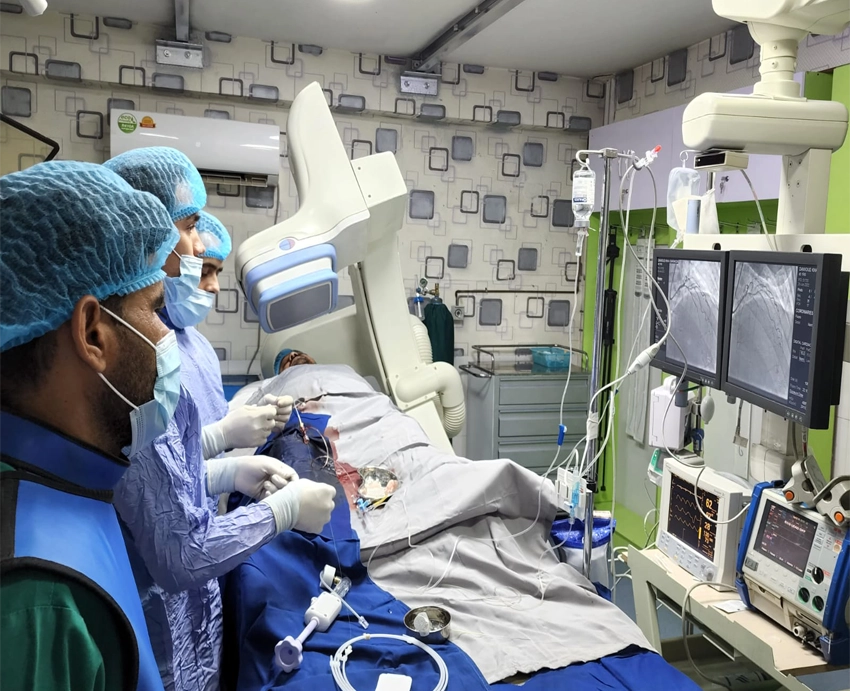
Coronary angiography is a test used to find out how much narrowing there is in your heart (coronary) arteries. The procedure uses a special dye (contrast material) and x-rays to see how blood flows through the arteries in your heart. Coronary artery luminal narrowing reduces the flow reserve for oxygenated blood to the heart, typically producing intermittent angina. Very advanced luminal occlusion usually produces a heart attack. Angiocardiography allows the recognition of occlusion, stenosis, restenosis, thrombosis or aneurysmal enlargement of the coronary artery lumens; heart chamber size; heart muscle contraction performance; and some aspects of heart valve function.
How the test is performed:
Coronary angiography is often done along with cardiac catheterization. Before the test starts, you will be given a mild sedative to help you relax.
An area of your body (the arm or groin) is cleaned and numbed with a local numbing medicine (anesthetic). The cardiologist passes a thin hollow tube, called a catheter, through an artery and carefully moves it up into the heart. X-ray images help the doctor position the catheter.
Once the catheter is in place, dye (contrast material) is injected into the catheter. X-ray images are taken to see how the dye moves through the artery. The dye helps highlight any blockages in blood flow.
Swiss online replica watches UK at affordable prices for men and women.
You can buy US 2024 breitling replica watches online. Fast shipping. Quality guarantee.
Hope you buy high quality fake rolex watches US here with less money.
The procedure most often lasts around 30 minutes
Percutaneous coronary intervention (PCI) is a non-surgical procedure used to treat narrowing of the coronary arteries of the heart found in coronary artery disease. The process involves combining coronary angioplasty with stenting, which is the insertion of a permanent wire-meshed tube that is either drug eluting (DES) or composed of bare metal (BMS). The stent delivery balloon from the angioplasty catheter is inflated with media to force contact between the struts of the stent and the vessel wall (stent apposition), thus widening the blood vessel diameter.
Primary PCI is the urgent use of PCI in people with acute heart attack, especially where there is evidence of heart damage on the electrocardiogram. PCI is also used in people after other forms of myocardial infarction or unstable angina where there is a high risk of further events. Finally, PCI may be used in people with stable angina pectoris, particularly if the symptoms are difficult to control with medication. PCI is an alternative to coronary artery bypass grafting (CABG, often referred to as bypass surgery), which bypasses stenotic arteries by grafting vessels from elsewhere in the body.